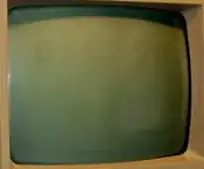Does a screensaver save the computer display screen?
And if it does, what does it save the screen from?
If the above two questions have a NO answer, than why is it called screensaver?
- 78,578
- 29
- 321
- 428
- 322
- 1
- 9
-
11It did on old CRT monitors (where a frozen screen could become imprinted on the monitor), but I don't think that's the case for LCD monitors. – Publius Oct 05 '13 at 04:50
-
2As Avi said, on old (very old, think 15-20 years) screens they're prevent burn in. On anything moderately modern, they're just pretty pictures. The only benefit is that they help provide some security by blanking any sensitive documents on screen and usually requiring a password to terminate. – jwenting Oct 05 '13 at 08:12
-
http://www.techlore.com/article/10099/Do-LCD-TVs-Burn-In-/ – bummi Oct 05 '13 at 09:18
-
Also see, [What is the usefulness of a screensaver on a computer using a LCD monitor?](http://superuser.com/q/480793/263) – nik Oct 05 '13 at 15:47
-
Any of those could be answers. – DJClayworth Oct 05 '13 at 18:52
-
wiki answer: http://en.wikipedia.org/wiki/Screen_burn-in – ratchet freak Oct 05 '13 at 19:45
-
and [superusers.SE agree with wikipedia](http://superuser.com/questions/3290/is-there-a-real-reason-to-use-a-screen-saver) – ratchet freak Oct 05 '13 at 19:52
1 Answers
This is a summary of Wikipedia:Screen burn-in.
CRT, Plasma, and OLED displays
These displays develop burn-in due to degradation of the light emitting compounds. Screensavers were initially designed to prevent phosphor burn-in in cathode ray tube (CRT) monitors. Plasma displays are also susceptible to burn-in due to overheating of the phosphors. Organic light-emitting diode (OLED) displays develop burn-in due to degradation of the organic compounds. (cnet)
In the worst cases, the burn-in is visible even when the display is not powered:

LCDs
Liquid crystal displays (LCDs) can suffer a different type of burn-in (gizmodo) also referred to as image persistence (fujitsu). Liquid crystals are designed to allow light through in their relaxed state, but can become "stuck" at a particular level of activation, causing an effect that looks very similar to traditional burn-in. (ref)

Screensavers
Screensavers can be useful in preventing burn-in on CRT, plasma, and OLED displays. For LCD displays, image persitence can be prevented by using a screensaver. (fujitsu)
-
1I understand the mechanism on LCD and OLED (light emitting chemical will "wear out" via photochemical side reactions. But what is the mechanism on LCDs? Is there any evidence of a real effect at all? – matt_black Oct 06 '13 at 11:11
-
2Does a moving screensaver have *any* advantage over simply making the screen dark? – gerrit Oct 06 '13 at 11:14
-
@matt_black I attached an image of an LCD suffering image persistence, but I can add referenced details about the mechanism. Thanks. – Oct 06 '13 at 15:56
-
1
-
4A moving screensaver prevents burn-in by not having the same pixels lit continuously, but makes it easy to tell that the screen is turned on. A "black" screensaver might make you accidentally power cycle when you come up to a computer and think it's turned off. – Larry Gritz Oct 10 '13 at 20:54